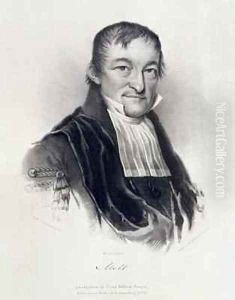Henricus Johannes Couwenberg Paintings
Henricus Johannes Couwenberg was a Dutch artist, born in 1805 in the Netherlands. Throughout his life, Couwenberg developed a distinctive style that positioned him among the notable artists of the 19th century in his country. His artistic journey is an interesting reflection of the period's evolving artistic tastes and the broader shifts within Dutch society at the time.
Couwenberg's early life was marked by a profound engagement with the arts, fostered by the rich cultural environment of the Netherlands, which has a long-standing tradition in painting and the visual arts. During his formative years, he received training that was deeply influenced by the Dutch Golden Age's legacy, a period when Dutch art was renowned for its quality, diversity, and innovation. This historical backdrop played a crucial role in shaping Couwenberg's artistic vision and his commitment to exploring new themes and techniques.
Throughout his career, Henricus Johannes Couwenberg was known for his versatility. He dabbled in various genres, including landscape, portraiture, and historical painting, showcasing his wide-ranging skills and adaptability to different artistic demands. His works were characterized by a meticulous attention to detail, a vibrant use of color, and an ability to capture the essence of his subjects with both realism and emotional depth. These qualities earned him respect and admiration among his contemporaries and art enthusiasts.
Despite his talents, Couwenberg's work was sometimes overshadowed by the more dominant figures of his era, leading to periods where his contributions were not as widely recognized as they might have been. Nonetheless, his dedication to his craft and his ability to infuse his works with a unique blend of realism and sentimentality ensured that his art continued to be appreciated by those who sought depth and authenticity in visual expression.
Henricus Johannes Couwenberg passed away in 1867, leaving behind a legacy that, though perhaps not as celebrated as some of his peers, remains an important part of the 19th-century Dutch art scene. His life and work reflect the vibrancy and complexity of his times, offering insights into the cultural and artistic currents that shaped the Netherlands during a period of significant change and development.
